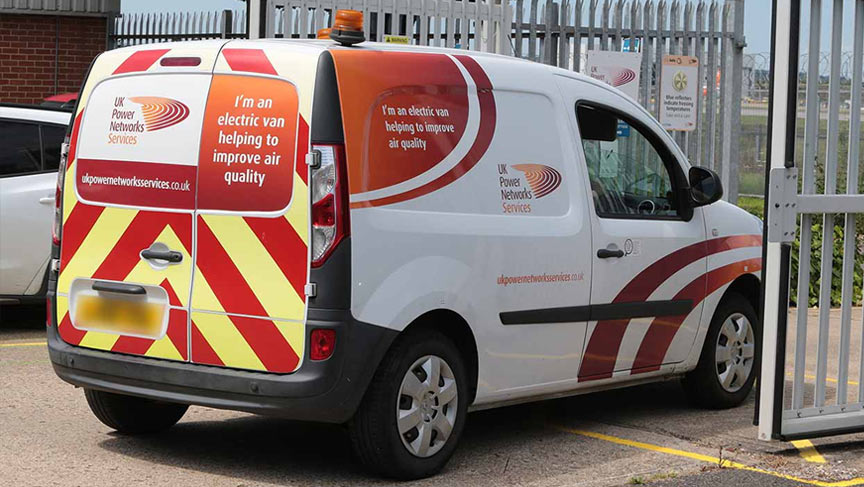Insight
Call for an intelligent integration of low-carbon initiatives in the ports industry

Ports have committed to reducing their Scope 1 emissions (direct emissions from their operations) and Scope 2 emissions (from power consumption). The challenge is to promote the use of low-carbon technologies and ensure infrastructure is in place to support decarbonisation.
There are multiple users operating within a port environment, each has specific energy requirements and decarbonisation priorities. Examples of energy and decarbonisation projects include:
- Hydrogen: Ports can utilise energy from renewables (including Solar PV and Offshore wind plants) to produce green hydrogen, they are multimodal transport hubs and are expected to become hydrogen import/export hubs.
- Shore power: Shore power allows vessels to connect to an onshore electricity supply and switch off their engines whilst berthed. This reduces emissions, as well as particulates, noise and vibrations, thus improving the local environment and supporting climate goals. However, the commercial business case for developing the assets for shore power remains unclear.
- Electrification of road transport: EV chargers are being installed at ports to provide charging for on-site fleets and offer staff/visitor facilities. Ports have an opportunity to revolutionise road freight and lead the future of HGV electrification.
- Decarbonisation of Cargo Handling Equipment (CHE): Ports are exploring options to decarbonise CHE that operates within the port (e.g. forklifts, cranes and heavy-duty trucks). Ports in California have made significant progress in electrification of CHE and this trend will spread in the UK.
- Energy storage: Ports are ideally located to utilise solar and wind power combined with an energy storage system to ensure cleaner energy consumption and reduce peak energy demand.
Challenges
The projects will require additional electrical infrastructure, which can create large spikes in peak demand. The existing infrastructure was not designed to handle the anticipated load. Vessel operators attribute the lack of infrastructure at ports as a key factor delaying the installation of shore power technologies on their vessels. Upgrading electrical capacity will require extensive and costly infrastructure upgrades due to old and highly constrained electricity networks at ports. Additionally, local grid constraints can pose additional obstacles to energy projects at ports, resulting in higher-than-expected investment requirements and delays in decarbonisation.
Opportunities
There are opportunities to minimise peak demand and reduce infrastructure costs by proactively designing energy infrastructure to support all projects. This requires a holistic approach to avoid over-engineering and stranded assets.
A holistic infrastructure design approach can ensure the following benefits are realised:
- Economies of scale and high asset utilisation: Shared infrastructure across multiple projects (for example, shore-to-ship and EV hubs can share the electrical infrastructure) can reduce costs to individual parties and increase utilisation as there are more end-users.
- Optimally designed electrical network: The network will be well-connected and designed to serve the requirements of all stakeholders. There is an opportunity to bring other local organisations (including those developing renewable energy assets and electric vehicle hubs) to pool in resources.
- Bundling of flexible loads: If flexible loads are in operation at the port (e.g. Energy storage systems, refrigeration loads, smart-chargers) we can ensure that the connection is optimally sized to maximise its utilisation by integrating digitisation initiatives (data-driven solutions used to coordinate operations).
Developing an electrification roadmap
We have created an electrification roadmap development strategy that can be implemented at ports. This strategy focuses on creating a holistic plan that ensures future energy demands are met in the most cost-efficient manner. The key steps to develop the roadmap are:
- Stakeholder engagement: The first step in the development of an electrification roadmap is to identify all energy users at the port, and understand their priorities, how they operate and their future energy requirements.
- Demand forecast: Construct the power profiles of users based on existing power consumption profiles. In addition, we can estimate the future power consumption using the plans and strategies of each stakeholder.
- Energy sourcing options: Assess different scenarios for supplying power to the port to find the optimal solution. This may include grid connection options, on-/off-site renewable generation, and energy storage solutions.
- Infrastructure assessment: Site surveys to assess the existing infrastructure and identify upgrade requirements to support future generation and demand. The connection agreement(s) with the local electricity network will be reviewed to check if new connection applications would be beneficial.
- Innovation: Review the benefits of integrating innovative solutions to the port’s energy network, such as hydrogen systems, smart energy systems and flexibility markets.
- Commercial arrangements: Assess the commercial models available for financing, owning, operating and utilising the infrastructure. A priority for these arrangements is to maintain energy security.
- Asset planning: Produce a concept design for the future energy system and identify where shared private networks can offer cost savings. We will provide a cost estimate for the infrastructure and a timeline for projects.
- Business case: To ensure the proposed system can generate cost and emissions savings, we will conduct a cost-benefit analysis to review the business case and carbon dioxide equivalent reductions.
- Roadmap: Clearly define the near/mid-term next steps and outline the long-term plan that can be used to progress the port’s energy strategy.


Rosie is an Energy and Technology Consultant at UK Power Networks Services. She holds a BEng in Chemical Engineering and an MSc in Environmental Technology. She has worked extensively on feasibility studies and infrastructure assessments across multiple industries, focusing on low carbon solutions and behind-the-meter energy technologies.




